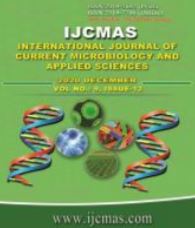


 National Academy of Agricultural Sciences (NAAS)
National Academy of Agricultural Sciences (NAAS)

|
PRINT ISSN : 2319-7692
Online ISSN : 2319-7706 Issues : 12 per year Publisher : Excellent Publishers Email : editorijcmas@gmail.com / submit@ijcmas.com Editor-in-chief: Dr.M.Prakash Index Copernicus ICV 2018: 95.39 NAAS RATING 2020: 5.38 |
The present study was conducted on 12 uterine torsion affected Mehsana buffaloes. The buffaloes were equally divided in to two groups and surgically managed to relive dystocia with or without supplementation of ascorbic acid. All the buffaloes were monitored for survivability up to 30 days post-caesarean section. Irrespective of the supplementation of ascorbic acid, buffaloes survived up to 30 days post operatively were included in group I (n=7), While buffaloes not survived up to 30 days post-operatively were included in group II (n=5). Previous handling of the cases in field and duration of illness were significantly (P<0.05) associated with survivability of buffaloes. The mean TAC concentration was significantly (P<0.05) increased after 48h and 96h of caesarean operation in group I. The MDA concentration was significantly (P<0.05) reduced at 96h of caesarean operation in the group I than group II. The ALT concentration was significantly (P<0.05) reduced after 48h as compared to its level before caesarean section in group I. Concentration of cortisol was also significantly (P<0.05) reduced after the caesarean operation in group I. In conclusion, total antioxidant capacity, malondialdehyde and cortisol can be used as prognostic indicators in caesarean operated buffaloes.
 |
 |
 |
 |
 |